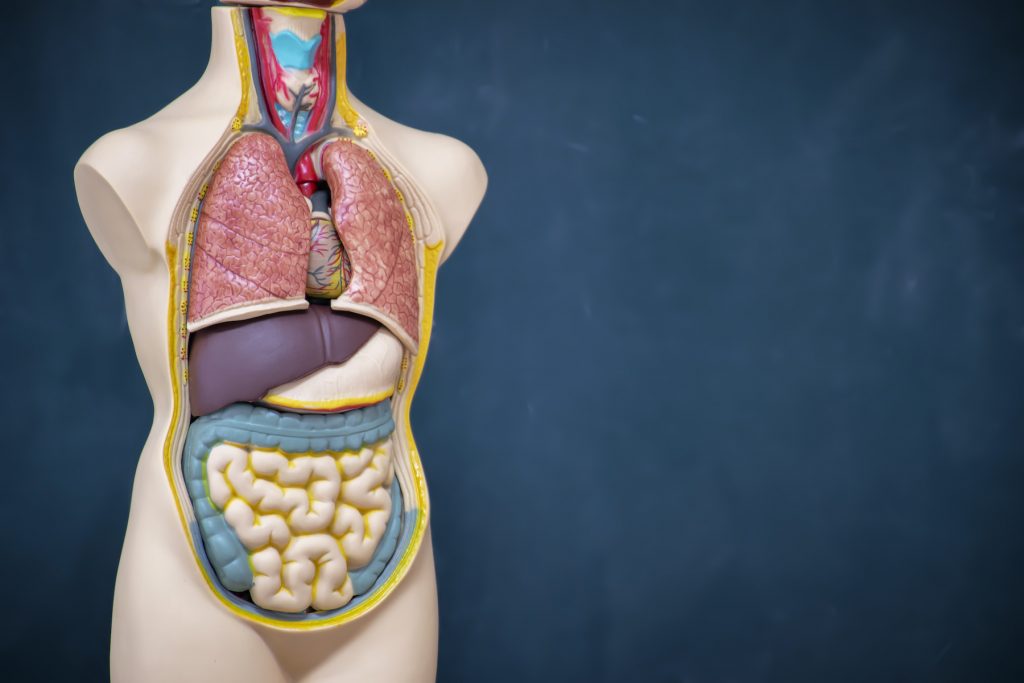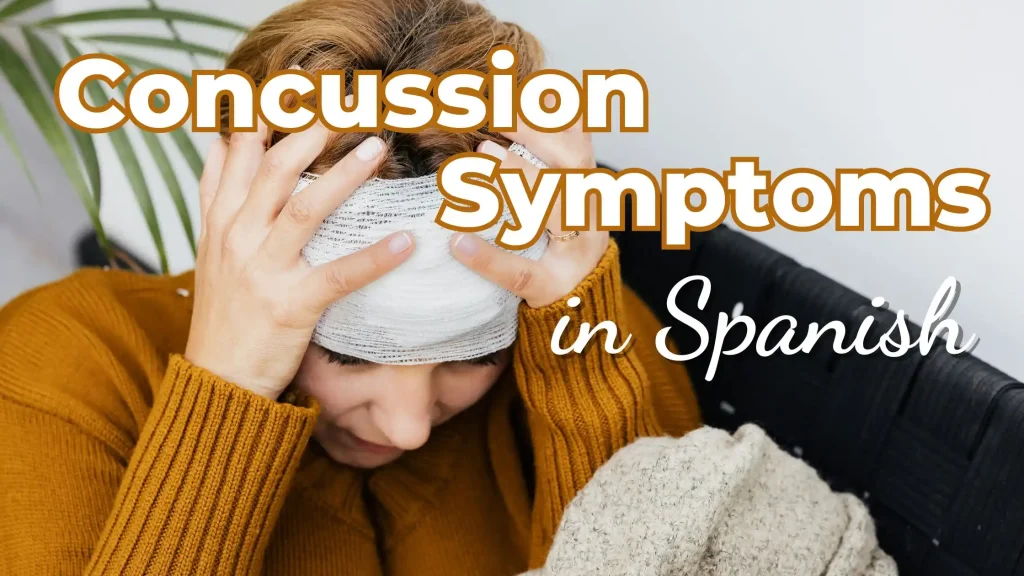This Medical Spanish lesson focuses on talking about 16 organs and their functions with your Spanish speaking patients: los órganos y sus funciones.
In this lesson you will learn about:
- The name of these 16 organs in Spanish.
- The main function of each of them to be able to explain it to your patient.
- Some helpful verbs and expressions to use.
Here is the Medical Spanish lesson about 16 Organs and Their Functions in Spanish I taught to the Facebook group:
Subscribe to our YouTube Channel to see all of our lessons and get the latest videos right away!
16 Organs / 16 Órganos
Here is the list of organs we are going to talk about in this lesson:
| Spanish | English |
| El bazo | Speen |
| El cerebro | Brain |
| El corazón | Heart |
| El estómago | Stomach |
| El hígado | Liver |
| El intestino delgado | Small intestine |
| El intestino grueso | Large intestine |
| El páncreas | Pancreas |
| El útero | Uterus |
| La piel | Skin |
| La vejiga | Bladder |
| La vesícula biliar | Gallbladder |
| Los ovarios | Ovaries |
| Los pulmones | Lungs |
| Los riñones | Kidneys |
| Los testículos | Testicles |
Some Verbs For Describing Functions / Unos verbos para describir funciones
These verbs are useful to describe the specific functions of the organs in Spanish to your patient:
| Spanish | English |
| Almacenar | To store |
| Apoyar | To support |
| Ayudar | To help |
| Bombear | To pump |
| Cambiar | To change / exchange |
| Circular | To circulate |
| Colectar | To collect |
| Combatir | To combat / defend against |
| Controlar | To control |
| Digerir (e-ie) | To digest |
| Eliminar | To eliminate |
| Excretar | To excrete |
| Filtrar | To filter |
| Mover (o-ue) | To move |
| Procesar | To process |
| Producir | To produce |
| Promover (o-ue) | To promote |
| Proteger (yo form g-j) | To protect |
| Quitar | To take away |
| Reciclar | To recycle |
| Respirar | To breathe |
Some Phrases / Unas frases
These phrases are useful for you during the conversation with your Spanish speaking patient, so be sure to remember them!:
- Ayuda … (it) helps
- Apoya … (it) supports
- Es como … it’s like
- Es responsable de… it’s responsible for
- Es para… it’s for (talking about the intention of something)
- Su función es… its function is
El bazo, el cerebro y el corazón
El bazo / Speen:
- El bazo es como un filtro para la sangre.
- Quita los glóbulos rojos viejos y recicla el hierro.
El cerebro / Brain:
- El cerebro es el centro del sistema nervioso.
- Controla todas las actividades del cuerpo, procesa toda la información de nuestros 5 sentidos, y es el centro de todo nuestro conocimiento, emociones, memorias, etc.
El corazón / Heart:
- El corazón es el músculo responsable de circular sangre por todo el cuerpo. Tiene 4 cámaras.
- Recibe sangre por las venas y bombea sangre por las arterias.
| Spanish | English |
| Glóbulos rojos | Red blood cells |
| Sistema nervioso | Nervous system |
| Circular sangre | To circulate blood |
| Conocimiento | Consciousness / Knowledge |
| Cámara | Cámera / Chamber |
El estómago y el hígado
El estómago / Stomach:
- El estómago digiere nuestra comida para que el cuerpo pueda usarla para energía y nutrientes.
- Secreta enzimas y ácido para ayudar en la digestión, luego pasa la comida al intestino delgado.
El hígado / Liver:
- El hígado es un filtro importante para la sangre. Quita varias toxinas de la sangre.
- También ayuda en la digestión al producir bilis que se almacena en la vesícula biliar.
| Spanish | English |
| Secretar | To secrete |
| Toxina | Toxin |
| Digestión | Digestion |
El intestino delgado y el intestino grueso
El intestino delgado / Small Intestine:
- El intestino delgado es un órgano muy largo que recibe comida del estómago.
- Su función es absorber los nutrientes y minerales de la comida.
- Él absorbe los nutrientes y los pasa a la sangre para entregar a la células del cuerpo.
El intestino grueso / Large Intestine:
- El intestino grueso recibe lo que sobra del intestino delgado y su función es absorber el agua de los residuos.
- Después de absorber el agua, lo que queda son las heces que luego salen del recto.
| Spanish | English |
| Absorber | To absorb |
| Células | Cells |
| Heces | Stool |
| Largo | Long |
| Entregar | To Deliver / Turn in |
| Lo que sobra | What’s left over |
El páncreas, el útero y la piel
El páncreas / Pancreas:
- El páncreas es una glándula que secreta hormonas (como insulina) para ayudar a regular los niveles de glucosa en la sangre.
- También secreta “jugos pancreáticos” que ayudan el intestino delgado digerir (absorber) los nutrientes de la comida.
El útero / Uterus:
- El útero (o la matriz) es el órgano en mujeres que provee el ambiente para los bebés crecer.
- Durante los años de fecundidad, cada mes las paredes del útero se preparan para recibir un óvulo.
- Si el óvulo no se implanta, el útero suelta ese tejido extra y así le baja la regla.
La piel / Skin:
- La piel es el órgano más grande del cuerpo.
- Es para proteger el cuerpo contra infecciones, regular la temperatura del cuerpo, y prevenir la deshidratación.
| Spanish | English |
| Glándula | Gland |
| Jugos pancreáticos | Pancreatic juices |
| Fecundidad | Fertility |
| Niveles | Levels |
| Proveer | To provide |
| Prevenir | To prevent |
| Tejido extra | Extra tissue |
Note: “Óvalo” in Spanish means “oval”. The right word for “egg” in this case is “óvulo”, but if, for any reason, you are talking about bird’s eggs, then the word in that case is “huevo”.
La vejiga, la vesícula biliar, los ovarios
La vejiga / Bladder:
- La vejiga es el órgano que almacena la orina (los líquidos que el cuerpo no necesita). Los riñones quitan los líquidos de la sangre y los pasa a la vejiga para almacenar. Cuando se llena, hay que orinar.
La vesícula biliar / Gallbladder:
- La vesícula biliar almacena la bilis que produce el hígado para la digestión.
- Cuando el estómago necesita digerir las grasas, la vesícula secreta la bilis al estómago.
Los ovarios / Ovaries:
- Los ovarios almacenan los óvulos para reproducción. Cada mes el ovario suelta un óvulo a las trompas de Falopio que conectan al útero.
- Los ovarios también producen y secretan hormonas importantes para mujeres.
| Spanish | English |
| Reproducción | Reproduction |
| Grasas | Fats |
| Óvulo | Egg |
Los pulmones, los riñones y los testículos
Los pulmones / Lungs:
- Con cada respiración, los pulmones cambian el dióxido de carbono en la sangre por oxígeno fresco.
- Al inhalar el cuerpo recibe oxígeno y al exhalar el cuerpo elimina el aire usado (dióxido de carbono).
Los riñones / Kidneys:
- Los riñones ayudan a regular el volumen de sangre y limpian la sangre.
- Mientras la sangre pasa por ellos, quitan los líquidos malos de la sangre. Esos líquidos (la orina) luego pasan a la vejiga.
Los testículos / Testicles:
- Los testículos producen hormonas en los hombres (la testosterona) y también producen los espermas para reproducción.
| Spanish | English |
| Respiración | Breathing / Breathe |
| Regular | To regulate |
| Esperma | Sperm |
| Limpiar | To clean |
Now it’s your turn / Ahora es tu turno
Now you have this list of organs and their functions in Spanish, what you might consider is think through the different conditions and how they are related to any of these organs, take their specific description and then create a separate description of what the condition does or how that organ isn’t working so now it produces this condition.
I packaged all of this vocabulary into some flashcards for you to study. Test yourself on this vocabulary in Spanish with the flashcards below:
Share your descriptions in the comments below or on the Facebook group to get feedback from other Medical Spanish learners 🙂
I packaged all of this into easily downloadable .pdf notes– Get your copy for free today!
Keep up the good work speaking responsible Spanish to your patients! Check out our other books, classes & products to help you !
*If the link isn’t working for you, you may need to unblock pop-ups in your browser settings





